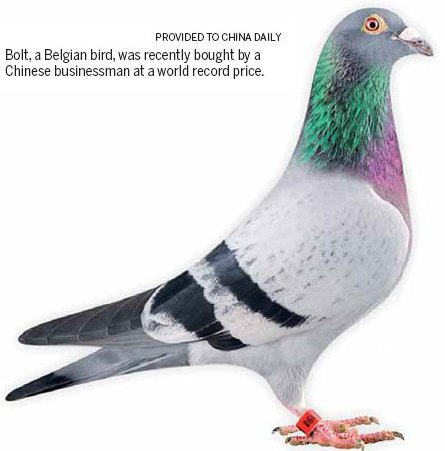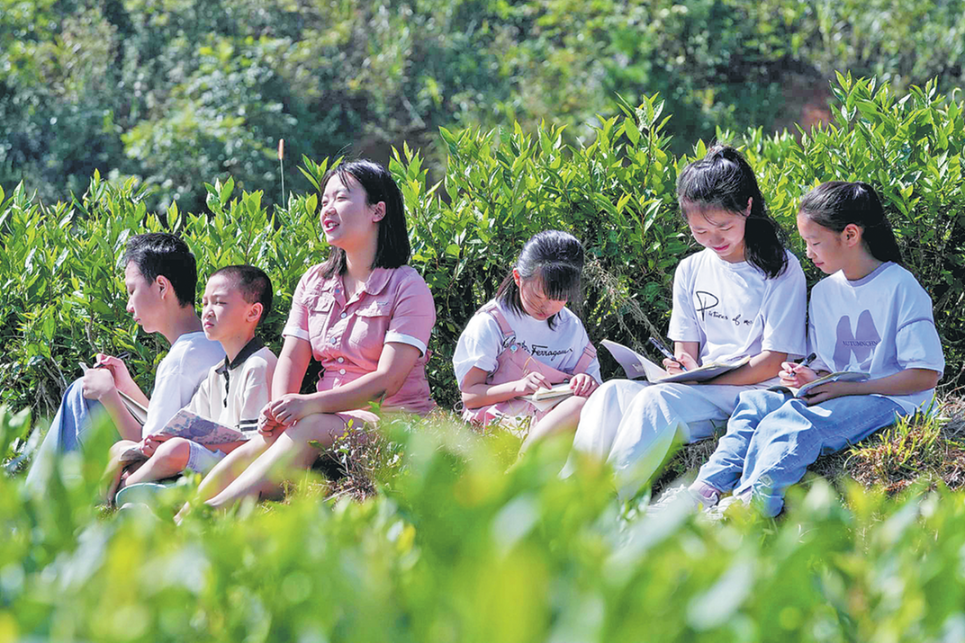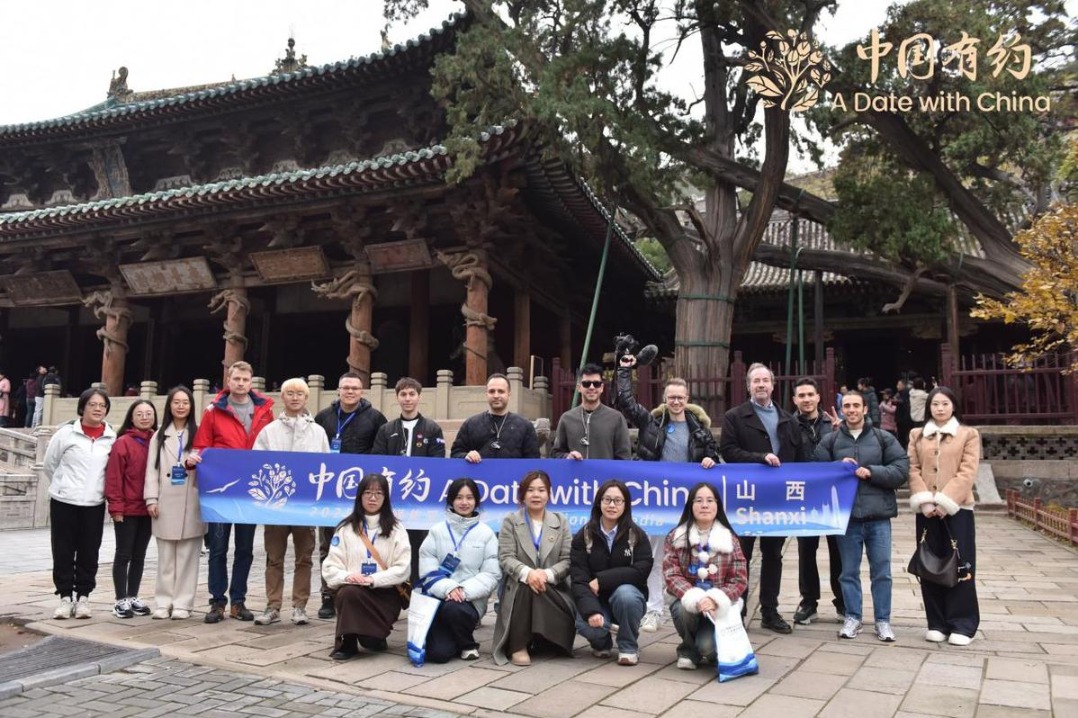Fancier times for Chinese lofts

Pigeon racing is now soaring after centuries of ups and downs
China's nouveau riche have taken to playing golf, horse riding, sailing and fencing. Now it is pigeon racing - although unlike golf the pursuit has a long history in the Middle Kingdom.
In May, a Chinese businessman set a world record by spending $425,000 on a racing pigeon auctioned in Brussels, stunning pigeon fanciers around the world and signaling the growing interest in China of a sport that originated in northern Europe and has been popular there for centuries.
According to Beijing Youth Daily, China now has some 300,000 pigeon racing fans.
Pigeon racing was banned in China during the "cultural revolution" (1966-76) as it was regarded as a capitalist pursuit, but it made a comeback soon after, and really began to take flight during China's reform and opening-up in the 1980s, when there was an influx of foreign breeds in the major Chinese cities.
However, although pigeon racing originated in the West, the sport has its own roots in China, where pigeon breeding is an old tradition.
According to historical records, pigeons are one of the oldest domesticated birds in China. People began raising them for entertainment as early as the Eastern Han Dynasty (AD 25-220). Records also show that it continued during the Tang (618-907) and Song (960-1279) dynasties with the birds also joining the pet pools of royal families.
Because of the birds' homing ability, some were trained to carry messages, and these were the ancestors of modern racing pigeons. They became the most reliable means of communication in ancient China, because they could be easily trained to fly to a specific place.
People in southern Guangdong province began to use messenger pigeons in the Sui Dynasty (AD 581-618), the practice becoming more prevalent in the following Tang Dynasty. Emperor Li Shimin kept a messenger pigeon, which flew the 285 kilometers between Xi'an and Luoyang back and forth several times a week.
Pigeons were also used for military communications during wars in ancient China, greatly reducing delivery times compared with land-based methods, and in general remained popular couriers until the invention of the telegraph and telephone.
Pigeon racing requires a specific breed of pigeon that is specially trained and conditioned. The sport is believed to have first taken off in China in Guangdong province at the end of the Ming Dynasty (1368-1644).
The earliest race recorded was in 1521. A man from Chaozhou in Guangdong had bought a pair of purple-feather pigeons from central Henan province, and took them to various racing competitions. The pigeons did not let him down. He used the prize money to breed and sell more racing pigeons, becoming rich in the process.
Guangdong Xin Yu (The Guangdong News Records) also states that in 1644 people in Foshan set up a pigeon racing association. They ran races in which a pigeon had to fly three journeys to win - a bit like a triathlon.
In the early years of the Qing Dynasty (1644-1911), pigeon racing became more common in China, with activities recorded in Beijing, Jiangsu, Henan and other parts of the country. As the number of competitions increased, more breeds were created, greatly improving the quality of China's domestic pigeons. The best-known breeds at that time were the Chinese blue and pink-gray, and the Beijing dots. Pigeon fanciers in Europe and Japan began introducing them to cross-breed with their own.
Books about pigeons also became popular, and resulted in one of the world's oldest dove monographs - Ge Jing (The Book of Pigeons). It was written by Zhang Wanzhong of Shangdong in 1637, and accurately classified bird types by their subtle differences. It would be another 143 years before a similar book was produced in Germany, and 236 years before a French one that is considered a pioneering study of the history of homing pigeons.
However, because of the ban on private associations in the mid and late Qing Dynasty, pigeon racing organizations were dissolved and the sport gradually faded out in China.
It was revived in the 1930s in Shanghai and Hangzhou, using the native Li and Yang species for racing. Pigeon associations returned and fanciers started introducing breeds from Europe, particularly Belgium and Germany.
The best-known figure in China's pigeon racing circle in the 1930s was Li Meiling. His pigeons repeatedly beat their Western competitors in various contests, and their descendants were used by fanciers over the next few decades.
Following a hiatus during World War II, the pursuit thrived again, and after some ups and downs it is now at its zenith. Exchanges with pigeon breeders in the West are the most frequent in history.
Rich Chinese owners still look to Europe, particularly Belgium, where breeders produce some of the world's finest birds.
The number of pigeon owners is soaring. The Beijing Racing Pigeon Association alone boasts more than 30,000 registered members. Passion for competition, coupled with lucrative prizes, has attracted more young people in China to take an interest in the sport.
liulu@chinadaily.com.cn

(China Daily Africa Weekly 12/20/2013 page25)
Today's Top News
- Japan unqualified for UN Security Council: Chinese envoy
- Deforestation is climate action's blind spot
- Japan unqualified for UN Security Council: Chinese envoy
- China, Germany reach outcomes after discussions
- Chinese cities dominate global science hub rankings
- Japan's tourism battered as Chinese travelers cancel trips































